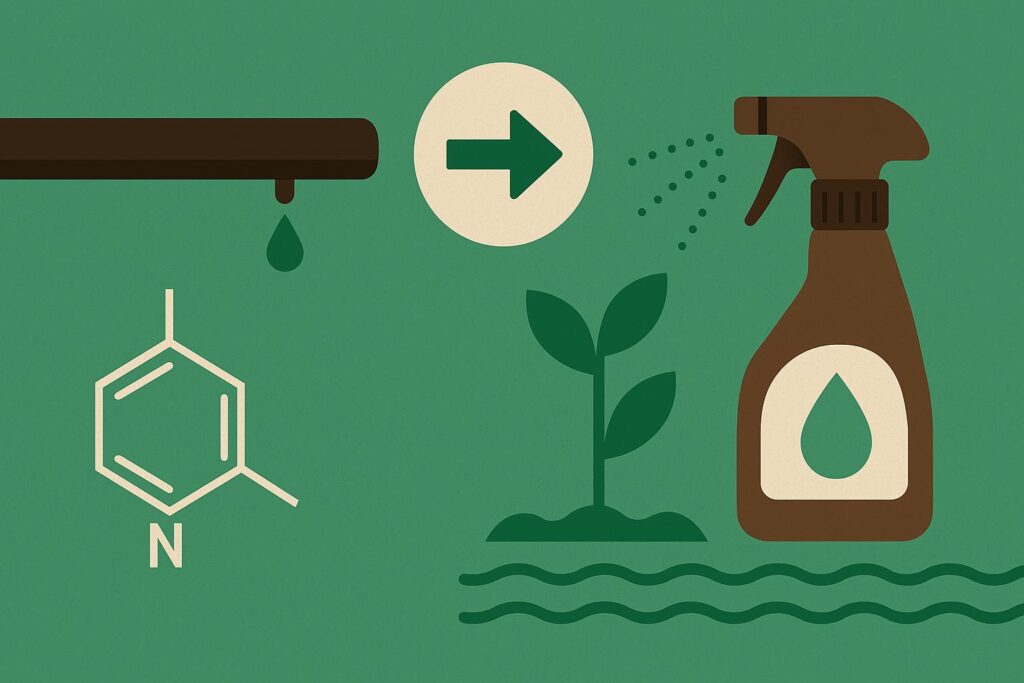Why Fungicides Matter in Indian Farming
Fungal infections such as rusts, mildews, smuts, and blights impact major crops like rice, wheat, sugarcane, cotton, and vegetables across India. Losses caused by fungal pathogens range from 10% to 40%, depending on the region, crop, and season.
Two key reasons make fungicides indispensable:
- They prevent the spread of pathogens during key plant growth stages.
- They act as both protective and curative agents, extending crop lifespan.
Farmers with high humidity, excessive irrigation, or monsoon-related issues often face higher fungal disease pressures. In such environments, fungicide treatments are usually the difference between a failed crop and a profitable harvest.
What Are Fungicides? Core Classification and Types
Fungicides are chemical or biological substances that inhibit or kill fungi and their spores. In Indian agriculture, fungicides are classified based on composition, action, and application method.
- Based on Chemical Composition
- Inorganic fungicides: Include sulphur and copper-based compounds. Used in older farming methods.
- Organic fungicides: Include carbendazim, mancozeb, and triazoles. Widely used in modern crop protection.
- Based on Mode of Action
- Contact fungicides: Act on the surface; effective only where sprayed.
- Systemic fungicides: Absorbed by the plant; provide internal protection and longer control.
- Based on Application Timing
- Preventive fungicides: Applied before infection appears.
- Curative fungicides: Applied after the disease is detected.
Farmers choose fungicides based on the crop type, climate zone, disease intensity, and plant growth stage.
Key Crops and Fungal Threats Across Indian Regions
The diversity in agro-climatic zones creates region-specific challenges. Here’s a brief breakdown:
|
Crop |
Region | Common Fungal Diseases |
Key Fungicides Used |
| Rice | Eastern, Southern | Blast, Sheath blight |
Tricyclazole, Carbendazim |
|
Wheat |
North India | Rusts (Yellow, Brown) |
Propiconazole, Mancozeb |
|
Sugarcane |
Maharashtra, UP | Red rot, Smut |
Hexaconazole, Thiophanate-methyl |
|
Vegetables |
Pan-India | Powdery mildew, Damping off |
Chlorothalonil, Metalaxyl |
|
Grapes |
Nashik, Maharashtra | Downy mildew, Anthracnose |
Fosetyl-Al, Dimethomorph |
India’s dependence on monsoon rainfall often creates perfect fungal breeding conditions. Effective fungicide management is crucial in these high-risk crop cycles.
Best Practices for Safe and Effective Fungicide Use
Improper fungicide use can lead to resistance buildup and environmental harm. These practices promote sustainable usage:
- Rotate fungicides with different modes of action to prevent resistance.
- Follow label instructions strictly to ensure correct dosage and timing.
- Avoid overapplication, which leads to chemical buildup in soil and crops.
India’s Integrated Pest Management (IPM) policy encourages combining fungicides with biological control methods and good agronomic practices. This method reduces reliance on chemicals while improving long-term field health.
How to Apply Fungicides Correctly
The method of application impacts the efficacy of fungicides. Different equipment and techniques are used depending on the crop and farm scale.
- Foliar sprays: Most common method; used for vegetables and cereals.
- Seed treatment: Helps protect against early-stage infections like damping-off.
- Soil drenching: Effective for root zone pathogens.
- Aerial spraying: Used in large-scale farming of rice or wheat.
The use of nozzle calibration, water volume, and spray timing (preferably in the morning or late evening) ensures better coverage and absorption. The economic threshold level (ETL) helps decide the right time for fungicide use.
To find reliable options for your farming needs, consider this trusted resource to buy fungicides products that meet Indian agro-regulatory standards.
Government Regulations and Guidelines for Fungicides in India
The Insecticides Act, 1968, governs the production, distribution, and usage of fungicides in India. The Central Insecticides Board & Registration Committee (CIBRC) registers fungicides based on efficacy and safety data.
Manufacturers must provide:
- Toxicological data
- Residue analysis
- Bio-efficacy trials
- Shelf-life stability reports
Recently, the Indian government banned several fungicides considered harmful to human health and the environment. The banned list includes substances like Carbofuran and Captan.
Monitoring agencies like the National Centre for Integrated Pest Management (NCIPM) also release seasonal disease forecasts and safe usage bulletins.
Emerging Trends in Fungicide Use
Indian agriculture is shifting from traditional chemical methods to more sustainable and efficient fungicide strategies:
- Biological fungicides: Use of beneficial microbes like Trichoderma harzianum is increasing in organic farming.
- Nano-formulations: Deliver active ingredients in smaller doses with higher efficacy.
- Drone spraying: Adopted in states like Punjab for faster and uniform coverage.
- AI-driven disease prediction: Tools powered by satellite and weather data help farmers act preemptively.
Adoption of these technologies remains low in smallholder farms due to high costs, but government-backed FPOs (Farmer Producer Organizations) are bridging this gap.
“Technology and tradition must meet in the soil. Only then can farming thrive in a climate of change.“
Environmental Impact and Safe Disposal of Fungicides
Improper handling of fungicides contaminates water bodies, affects non-target organisms, and disrupts soil microbiota. Farmers are encouraged to:
- Use biodegradable containers or returnable packaging.
- Avoid rinsing containers in water bodies.
- Follow a three-rinse method and puncture empty containers before disposal.
- Store away from children and livestock in labeled, ventilated spaces.
Studies from TERI India highlight that over 60% of fungicide residues in water sources come from post-application waste mismanagement. Cleaner alternatives and awareness programs can mitigate this problem.
Challenges Faced by Indian Farmers
Fungicide adoption in India faces practical barriers:
- Limited access to education about correct usage.
- High input cost deters small and marginal farmers.
- Lack of disease diagnostic tools delays action.
- Adulterated products in the grey market pose serious threats.
Despite these challenges, India remains one of the fastest-growing fungicide markets, valued at USD 1.3 billion in 2022, with a projected CAGR of 6.5% through 2028.
Integrating Fungicides with Other Crop Protection Measures
Successful disease control involves integration, not isolation. Combining fungicides with the following techniques improves efficiency:
- Crop rotation to break the disease cycle.
- Resistant seed varieties for fungal resistance.
- Proper irrigation management to reduce humidity.
- Mulching to prevent spore splashing in vegetable crops.
Farmers following integrated crop management record yield increases of up to 25% and reduced chemical input costs by 18% per season. This approach builds long-term resilience.
FAQs on Fungicide Use in Indian Agriculture
- What is the best time to apply fungicides?
Apply early in the morning or late in the evening to avoid evaporation and sunburn, especially during critical crop stages like flowering or grain filling. - Are organic fungicides effective?
Yes, organic options like neem-based or Trichoderma-based formulations work well for minor to moderate infections and suit organic farming systems. - Can fungicides be mixed with insecticides or fertilizers?
Compatibility depends on the chemical structure. Always check label instructions or consult an agronomist before tank mixing. - How do I store fungicides safely?
Keep them in dry, cool, and labeled storage. Avoid direct sunlight and store away from food, seeds, and water sources. - Do fungicides expire?
Yes. Shelf life varies from 1 to 3 years. Expired fungicides lose efficacy and may harm crops.
Future of Fungicides in Indian Agriculture
Precision farming, AI-based disease prediction, and less chemical residues in food chains will be the main focuses of fungicide use in India in the future. More farmers will choose sustainable solutions as a result of government incentives for safer formulations and public-private collaborations.
Fungicides will remain a key component of plant health management in India with stronger market regulation, access to diagnostics, and enhanced training.
The objective for farmers is still to strike a balance between responsibility and productivity. Using fungicides wisely and safely will be essential to overcoming this obstacle.
Check out more blogs: Why Solar Panel Dealers in Salem Are Key to Reducing Your Monthly Bills






